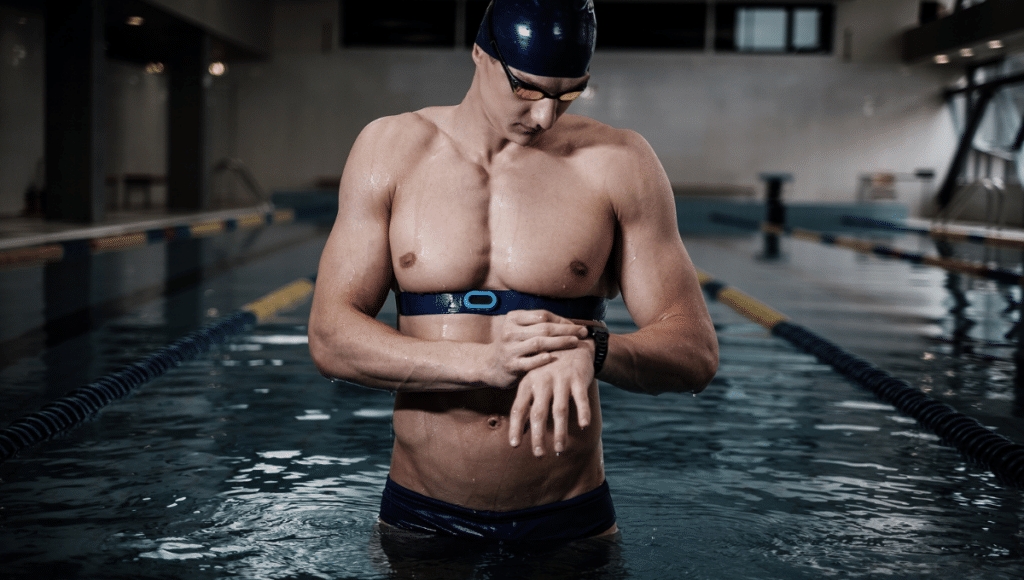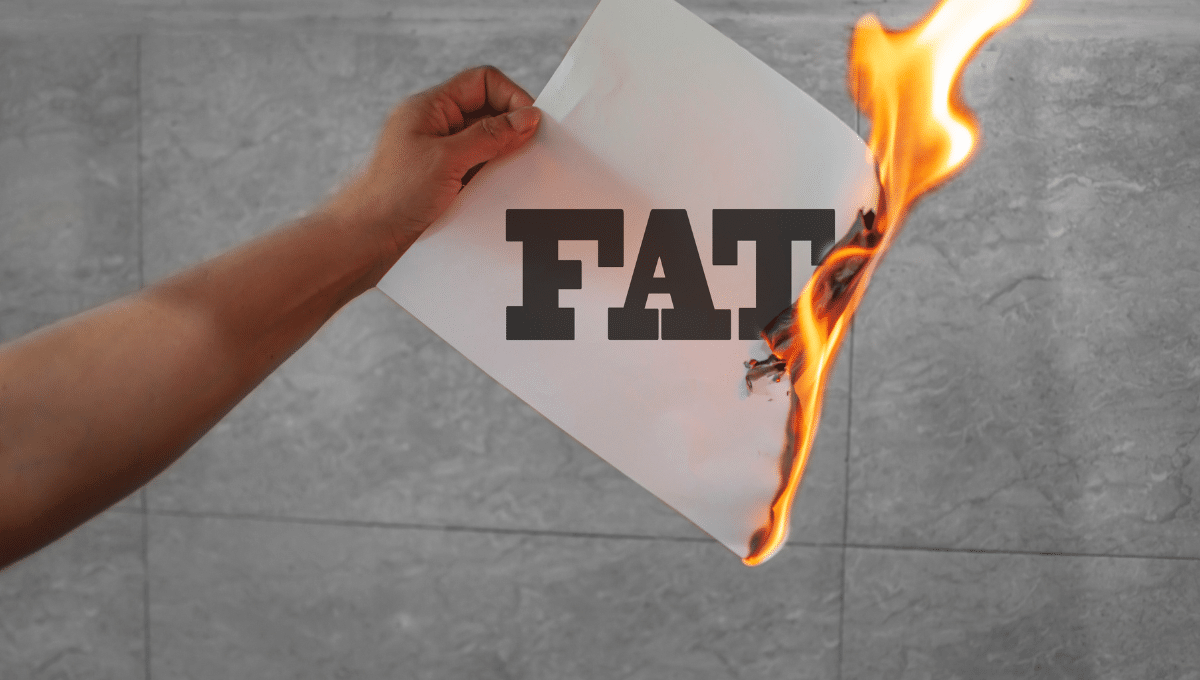Finding your target heart rate can be difficult, especially as a beginner. In this article we’re going to tell you all about the fat-burning zone theory, how to calculate you’re maximum heart rate, how to track your heart rate while working out, the zones to workout in, the best diets and exercises to burn fat, and so much more!
Like did you even know that you can have your heart rate in a certain zone and it’ll burn more calories and fat than in other zones? Did you even know there were zones?!
Jump to:
Let’s Start With The Fat-Burning Zone Theory
The fat-burning zone theory is the idea that if you get your heart rate in a target zone while working out that you can lose weight by tapping on the body’s fat storage rather than glycogen. They argue that the body burns a greater percentage of fat with lower-intensity exercises than at higher intensities because the body does not require ‘fast energy’ from glycogen.
While it is true that the body burns fat during low-intensity workouts, the fat-burning rate remains low and you have to exercise longer to burn the same amount of calories you would at higher intensities.
Although your body uses your glycogen stores first for ‘fast energy’ with exercises at higher intensity levels, it depletes the glycogen stores rapidly enough to force your body to tap into the fat stores. This means that high-intensity workouts are more efficient in burning way more total calories if you’re needing it done in a shorter amount of time. So the total number of calories you burn leads to the most fat loss so getting to your max heart rate quicker and faster is typically the best way to go.
What’s The Difference Between The Fat Burning Zone vs. Cardio Zone?
The main difference between the cardio zone and the fat-burning zone is the intensity. For better cardio benefits, your heart rate can and should raise to about 85% of its maximum rate, whereas it only needs to boost to around 64% to 76% of its maximum rate to burn fat. The American Heart Association recommends people exercise between 50% to 85% of their maximum heart rate. So imagine if you’re a 20-year-old, then you’re maximum heart rate would be around 200 bpm so they’d recommend you keep your heart rate around 100-160 bpm while working out.
What’s The Difference Between Bruning Calories vs. Burning Fat?
Any form of exercise will burn calories and while the proportion of fat used for energy may be higher with a low-intensity cardio exercise like going for a walk, it will take much longer to burn as many calories walking as compared to a high-intensity exercise like an intense bike ride. So in reality it’s likely better for you to get to your target heart rate zones at a quicker rate than do a low-intensity exercise for a longer period of time.

The Four Training Zones:
First up is going to be the warm-up zone. This is where you prepare your cardio-respiratory system, muscles, and joints to move and work harder. This means you should be at 50% to 70% of your maximum heart rate. It is a comfortable pace where you feel as though you can go on for a long time.
After the warm-up zone is the supposed fat-burning zone for weight loss where you are working out at about 70% to 80% of your maximum heart rate.
The next one is the aerobic zone. Your heart rate is 81% to 93% of your maximum heart rate. The calories you burn here are split evenly between your fat stores and glycogen. Although you will not burn more fat calories than glycogen, you will be burning more calories overall. This zone makes your heart pump harder, which is a fantastic cardiovascular exercise to keep your heart healthy.
To push over into the anaerobic zone you will be at 94% to 100% of your maximum heart rate. This zone is very difficult and nearly impossible to spend more than a minute here as your glycogen stores are depleted faster than they can be replenished. Anaerobic intervals (or interval training of vigorous activity) widen your fat and aerobic zones and burn a ton of calories. This is where the afterburn (temporary increase in metabolism) kicks in, which is known as excess post-exercise oxygen consumption (EPOC) where your body continues to burn more calories even after a high-intensity workout.
Now keep in mind that the intensity of your activity determines how much and how fast your heart rate increases. For instance, a running heart rate should be between 50% and 85% of your maximum heart rate. From there you can then adjust your pace based on what you’re aiming for in your run like if you notice that your heart rate is going below this, you can increase your pace or if your heart rate reaches its maximum, it would be better to slow down so that you are able to finish your run.
How To Find Your Maximum Heart Rate:
So we’ve been talking about your maximum heart rate a lot, but how do you measure it? Maximum heart rate is the fastest your heart can beat per minute during exercise or periods you are under stress.
There is some debate among professionals about what is the best way to calculate your maximum heart rate, though a common favorite is the Fox formula which is recommended by the American Heart Association. While it is not a difficult way to determine your maximum heart rate, it doesn’t account for many personalized differences that can influence your maximum heart rates, like your sex and your fitness level.
However, here’s the Fox formula to get a general idea of your maximum:
220 – your age = maximum heart rate
Simple as that.
So if you’re 20 years old your maximum heart rate should be about 200 bpm, if you’re 45 years old then your maximum heart rate should be around 175 bpm, and so on.

Ways to Assess Fat Burning:
When measuring exercise intensity there are two things to measure to asses the fat you’re burning.
First, determine how you feel. You’re going to make notes of your perceived exertion. This will be different from person to person, meaning this is a subjective measure of how your workout is going.
A good gauge to see how intense you’re workout is if you’re working out at a moderate pace, you should be able to talk but not sing, and you’ll likely start to sweat after about 10 minutes. If you’re working out at an intense pace, you shouldn’t be able to say more than a few words at a time and will sweat a lot sooner than 10 minutes.
Secondly, keep track of your heart rate. Noting the intensity of your workout with your heart rate is a more objective way to determine it. The higher your heart rate is while working out, the higher your exercise intensity is, meaning you’re more likely to achieve fat-burning in your workout.
The cheapest way to measure your heart rate is to use your fingers to track your pulse by counting your heartbeats for 60 seconds (or for 30 seconds and multiplying the number of beats by two). The number you get is your heart rate.
The Best Ways To Track Your Heart Rate:
Okay, but what if you don’t want to track you’re heart rate by using your fingers? Lucky for you there are multiple ways to check and track you’re heart rating starting with…
The Wrist Monitor
Wristband heart rate monitors are very popular because, with a hundred or so bucks and a little device you strap on your wrist, you have a device that tracks your heart rate all day. Like the Fitbit Charge 2, for example, it records your pulse at all hours during the day or night and tells you if you’re in your fat-burning, resting, moderate, or maximum zone without so much as a tap on the device.
These types of devices often come with a way to measure your daily steps, calories burned, floors climbed, distance walked, and the time of day. Another advantage is that your heart rate is continuously monitored and there’s no need to stop activity to record it, but on the flip side, it’s not always super accurate so take each calculation with a grain of salt.
Chest Strap Monitor
Chest strap heart rate monitors strap around your chest and record your heart rate during exercise.
Brands like Garmin’s Premium Heart Rate Monitor will wirelessly send your heart rate to your phone to get a more accurate view of your workout. These straps are usually soft and adjustable to fit a variety of body sizes, though the downside is many people find them awkward and uncomfortable. You also can only wear them when you’re working out. Some aren’t waterproof either and can’t be worn swimming. Some might even advertise it as being water resistant, but can only be worn for short periods of time underwater so be careful to read the descriptions before you buy a chest strap monitor.

Ways To Reach The Fat Burning Rate:
The best workouts to get you into your fat-burning zone really depend on the person. The key is to monitor your heart rate during different activities to see where you land and start from there.
Here are some exercises that can help you get to your fat-burning zone:
- Jogging
- Water Aerobics
- Jumping Rope
- Cycling (under 10 miles per hour)
- Tennis
- Ballroom or Hip Hop Dancing
While you can get caught up worrying about burning fat, it’s still very important to push beyond the moderate-intensity exercises and elevate your heart rate into the zone from time to time and get to that max heart rate going. Working your heart harder strengthens your cardiovascular system and burns more calories than a moderate activity to help prevent things like heart disease, helps you reach your fitness goals or weight loss goals, and many other health benefits.
Interval training, a type of training exercise that involves a series of high-intensity workouts interspersed with rest or relief periods, is one of the best exercises for burning fat and is proven to work faster than running for long periods of time.

The Best Diets For Burning Fat:
The best diets for fat loss are typically ones that put you in a calorie deficit (consuming 800 to 1,200 calories a day) or are very high in protein or both! It really depends on how active you are, your fitness level, if you have any health issues, and personal preference.
The best diet for you might be something like these:
- Low-calorie diet
- Low-fat diet
- Low-carb diet
- Ketogenic diet
- High-protein diet
Though it is very important to remember not to go into an extreme diet without the consult of a medical professional and that not all diets work for everyone. Everyone’s body is different and what might work for your gym friends might not work for you so trial and error might be your best friend here.















